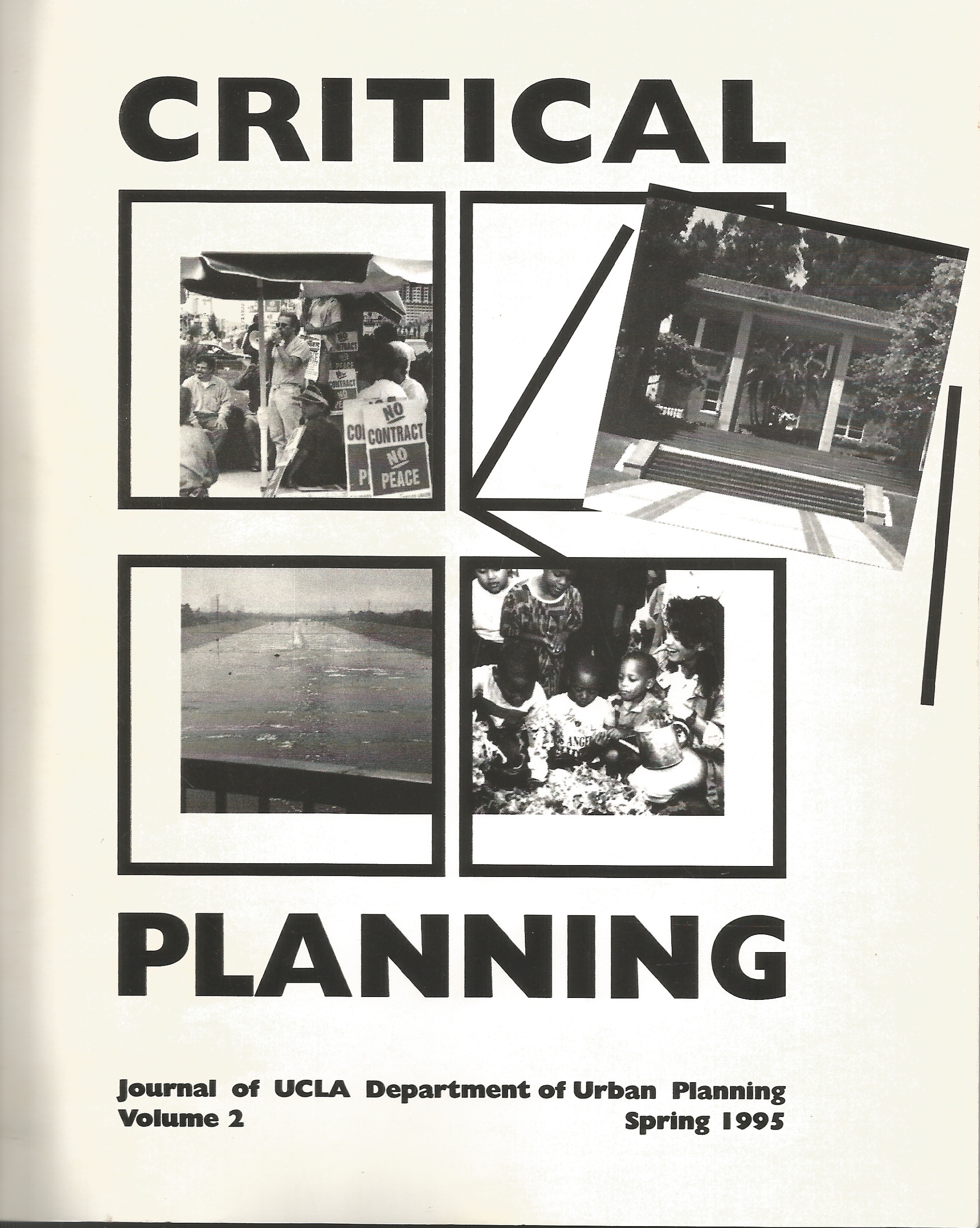Summer 1995
Note from the Editors:
The second edition of Critical Planning comes at a time of great change for the Department of Urban Planning. When we first initiated this journal two years ago, we were housed under one roof with the Department of Architecture in the Graduate School of Architecture and Urban Planning. Times have changed. The Chancellor’s Professional Schools Restructuring Plan forced a divorce of the two disciplines sending them off to separate new spaces. But we refuse to let this dictate the contents of our journal. In fact, we find it somewhat ironic that this year the journal contains several articles written by architecture students. This reflects our continuing commitment to maintain a discourse between planning and other disciplines including: architecture, social welfare, political science, geography, sociology, history, anthropology, art history and “others.”
In a similar vein, the diversity represented in this issue of Critical Planning illustrates the ways in which planning and architecture students at UCLA draw on a variety of discourses in their work. For example, this issue contains articles on critical urban history, the politics of post-Fordist production processes, grassroots organizing and development, and environmental policy. Several other authors consider ways in which contemporary theory and practice is urging architects and planners to challenge the boundaries of their disciplines, forcing us to move beyond “traditional” views. We are very pleased to continue a tradition, that we started with our first issue, of including academic articles written in a non-academic format.
If the dedication and enthusiasm of the year’s staff is any indication, we can look forward to a productive and successful future. We were fortunate to have an extremely talented and committed staff, many of whom plan to continue their involvement with the journal. But in order to evolve into a widely recognized refereed publication, the journal needs not only a high level of student involvement, but also the support and guidance of the faculty.
Ute Lehrer
Mirle Rabinowitz Bussell
Click here for full PDF of Vol. 2
Table of Contents:
Empowerment in Planning: Proof, Pedagogy and Practice
Lande Ajose
The Politics of Production: Post-Fordist Popular Sector Substitutions and Strategies
William Kramer
Perpetuating the Status Quo: Military Base Conversion Planning and the Lack of Environmental Policy
Kacy Collons
At the Cutting Edge: A Portrait of Innovative Grassroots Organizations in Los Angeles
Elwood Hopkins
Is Development Being Re-Generated in the Neo-Liberal Age?: Perspectives on Grassroots Challenges to Economic Development
Jordi Beneria-Sorkin
Towards a Radical Design Practice
Bill Adair
Programming for Spatiality in a Non-Spatial World
Laura Rambin
Decloaking the Camera Obscura: Toward a Free-Space Cinema
Anthony Raynsford
Poetry: Planning Theory of Riots Poetry or Planning Poetry on Riots Theory
Liette Gilbert
Fiction: From Ma-Ma with Love
Cynthia So
Book Review: The Politics of Diversity
Ute Lehrer
Final Projects of GSAUP Graduating Master’s and Ph.D Candidates, 1993-1994
